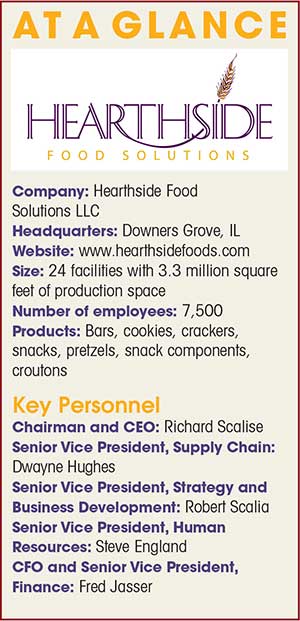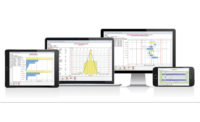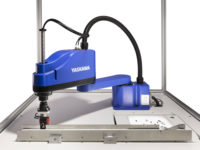In his 1954 compendium of writings, “Ideas and Opinions,” Albert Einstein said that “all knowledge of reality starts from experience and ends in it.” He put forth this scientific “fundamental truth” in connection to his predecessors Johannes Kepler and Galileo Galilei, tying it to the origins of modern science.
This fundamental truth also applies to modern snack and bakery production, and it sits at the core of Hearthside Food Solutions, Downers Grove, IL.
Video interview: Dwayne Hughes, senior vice president, supply chain, Hearthside Food Solutions
Rich Scalise, chairman, CEO and founder of Hearthside, had significant experience working with contract manufacturing services throughout his career. As a result of that broad level of experience, he had the requisite knowledge and vision to create a new company that could deliver outstanding quality with the flexibility of a startup—but with the scale and capabilities of a world-class manufacturing organization.
The result of that vision is Hearthside Food Solutions, which got its start in 2009 with the help of a private equity partner, Wind Point Partners. The company began producing bars, crackers and various snack components at four bakery facilities in Grand Rapids, MI.
The company grew quickly through acquisitions, and as it attracted more projects from top U.S. snack and bakery companies. By 2014, the company had reached $1 billion in revenue and operated 19 facilities. At this point, Hearthside had outgrown its original private equity partner and was acquired by Goldman Sachs and Vestar Capital Partners to fuel ongoing growth.
Core competencies
Hearthside is one of the largest bar manufacturers in the U.S. and Europe. The bar market is the fastest-growing segment Hearthside serves, with capabilities for baked and cold-formed bars, including snack, energy, nutrition, granola, breakfast, protein, sports and nutraceutical bars.
The competitive nature of the bar market requires continual study, and Hearthside has developed an extensive research-and-development function that has created over 4,000 bar recipes. Hearthside has 23 bar lines cross its production network with annual potential output of 3.1 billion bars. Through the wide range of product capabilities, including extrusion, layering, enrobing, inclusions, toppings, and so on, the number of potential bar variations Hearthside can accommodate hits 500,000.
“We have a lot of flexible capacity for bars,” says Dwayne Hughes, senior vice president, supply chain. He notes that many of Hearthside’s customers don’t like to do low-volume product runs—especially for products that contain allergens like peanut butters, and gluten-free products. “We’re very good at allergen segregation,” he says.
Hearthside is also one of the largest cookie and cracker manufacturers in the industry. Hearthside’s cookie and cracker capabilities include wire-cut, rotary, sandwich, minis and laminated styles. Snack capabilities include pretzels, rye chips, bagel chips, snack mixes, extruded snacks, clusters and popcorn. Natural and organic options exist, too.
Hughes notes that Hearthside has end-to-end supply-chain capabilities, including everything from planning a project to procuring the required ingredients, production, warehousing and distribution—or any desired combination of those tasks.
Hearthside is also on the cutting-edge of packaging technology as the owner of Cloud Packaging Equipment. Across its network, Hearthside has capabilities for multiple packaging formats, including pouches, stand-up resealable pouches, fin seal, bag-in-box, canisters and snack cups.
The idea of continuous improvement runs throughout Hearthside. “We’re SQF level 3 in all of our manufacturing plants, and that’s our baseline,” says Hughes, noting that they then go beyond SQF 3, aspiring toward world-class operational safety levels. “We’re an industry leader on workplace safety. We have a 1.45 OSHA incident rate right now. We’re pushing all of our plants to get it below 1.0.”
Sustainability also factors into Hearthside’s operational model. All of its plants are on track for landfill-free status, and two have already accomplished that feat.
The core drivers of contract manufacturing are quality, speed to market and innovation. Almost all of Hearthside’s customers have production capabilities. These are companies who own top-selling, world-renowned snack and bakery brands. So, in order to succeed, Hearthside needs to provide a value proposition that exceeds the internal abilities of its customers. That’s where daily innovation factors into the discussion, extending to its products, processes, business and finances.
Since its founding, Hearthside has made major investments in people, processes and technologies that help the company deliver outstanding quality, reliable speed to market, continuous innovation and competitive pricing. The company adheres to the belief that it must get better every year, as its customers and other competitors are always improving, as well.
Hearthside Performance Systems
 The company’s system of continuous improvement is known as Hearthside Performance Systems (HPS). While it includes aspects of leading manufacturing and management efficiency systems like 5S, TMax, kaizen, Six Sigma, lean manufacturing, TPM, etc., HPS has its own, distinct structure designed by Hearthside leadership to produce world-class manufacturing results.
The company’s system of continuous improvement is known as Hearthside Performance Systems (HPS). While it includes aspects of leading manufacturing and management efficiency systems like 5S, TMax, kaizen, Six Sigma, lean manufacturing, TPM, etc., HPS has its own, distinct structure designed by Hearthside leadership to produce world-class manufacturing results.
All Hearthside manufacturing facilities run on SAP, which helps ensure brand protection for its customers. “We have all of their formulas and confidential information locked in SAP,” says Hughes. The company continues to leverage its investment in SAP to produce more-accurate, valuable and predictive information to help with ongoing business management. “A product can’t ship unless it meets all the SAP requirements,” he says.
The Hearthside SAP system in use today was implemented by a group of the company’s top employees. “We took 20 people out of the operation and said, ‘Go learn SAP.’ They then learned SAP over the next year and a half,” says Hughes. “As we acquire plants, those same 20 people go in, do the business modeling and implement SAP.
“Back in 2011 and 2012,” continues Hughes, “we had to write letters to customers to tell them, ‘We’re going to go live on SAP. We probably want to build inventory just in case we have an issue.’ Then, around 2013 and 2014, we started writing letters just to tell them we were going live. Now, we don’t even tell them. We just flip the switch and go, because we do it so well—we’re that confident. Those 20 people are so good at it.”
Once Hearthside acquires a plant and staffs operations, everyone must learn HPS. “Everyone must know this system,” says Hughes. “We have programs to train people every quarter. We have annual training systems. Every plant manager must sign up and commit to the program.”
A key guiding principle of HPS is E2, or everyone every day. “The principle of everyone every day is everyone must learn something or improve something every day,” says Hughes. “That’s the mindset that we want to have for our leadership and our employees—it’s involvement and engagement. If you get everybody pulling the rope at the same time, learning something or improving something every day, we’re going to move the needle toward world-class.”
Hearthside maintains a core belief of keeping its guiding principles simple. “I have 7,000 employees in operations,” says Hughes. “We have to keep world-class manufacturing very simple if we’re going to standardize processes.” This approach toward manufacturing is built on four principles:
- Vison/mission-based integrated organizational design
- Continuous self-improvement
- Committed and educated workforce
- Customer value focused
“If we do those four things very well, we’ll be a world-class manufacturer,” says Hughes. “We can link everything back to these four core principles for everything we do, and that’s how we sell it to our employees.”
Every plant posts leadership boards that feature key performance indicators (KPIs) for every line. Operations staff members then address items on the leadership boards at weekly staff meetings and monthly town hall meetings.
“Every single week, the plants measure their metrics and post them publicly for anybody who walks in the plants—customers, suppliers and employees—to see,” says Hughes. So when a customer walks into a plant, they don’t have to ask a plant manager how their products ran, they can just look at the leadership board. “Our whole system is very transparent,” he says.
Hearthside also posts boards that highlight the current skill levels for every employee on the floor to identify the appropriate person for each work assignment on every shift. This helps ensure that all skill sets are represented on every shift—and highlights the need for employee cross-training. The wider the skill set an employee can develop, the more options they have on the floor.
The net result of HPS is trust. It’s creating a clear path for success that’s easily understood by everyone across the organization—a level of trust that also extends to Hearthside’s customers.
“We’re a food manufacturer without brands, only value,” says Hughes. “The only thing we have is our customer’s trust in us.”
The significant level of experience-based knowledge Hearthside Food Solutions acquires on a daily basis, relentlessly determining better ways to achieve its goals, will continue to drive its business to the forefront of the industry.












